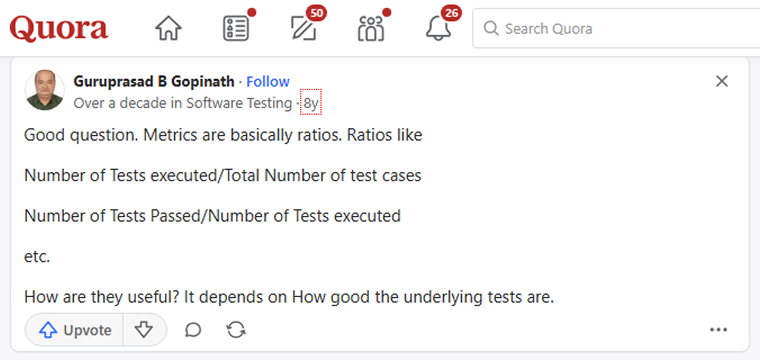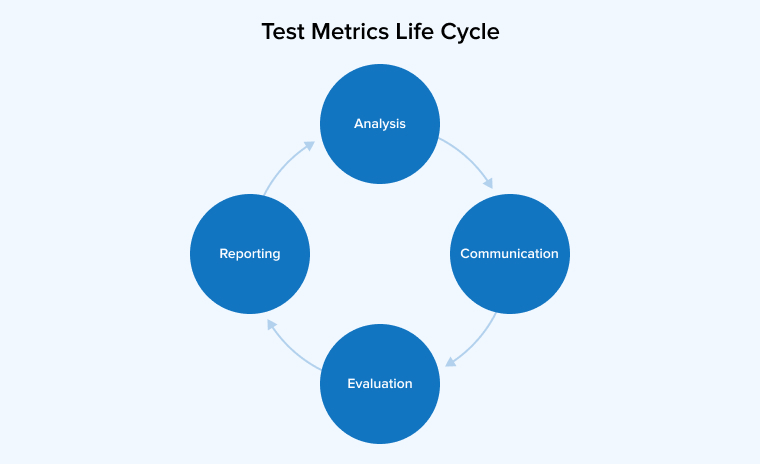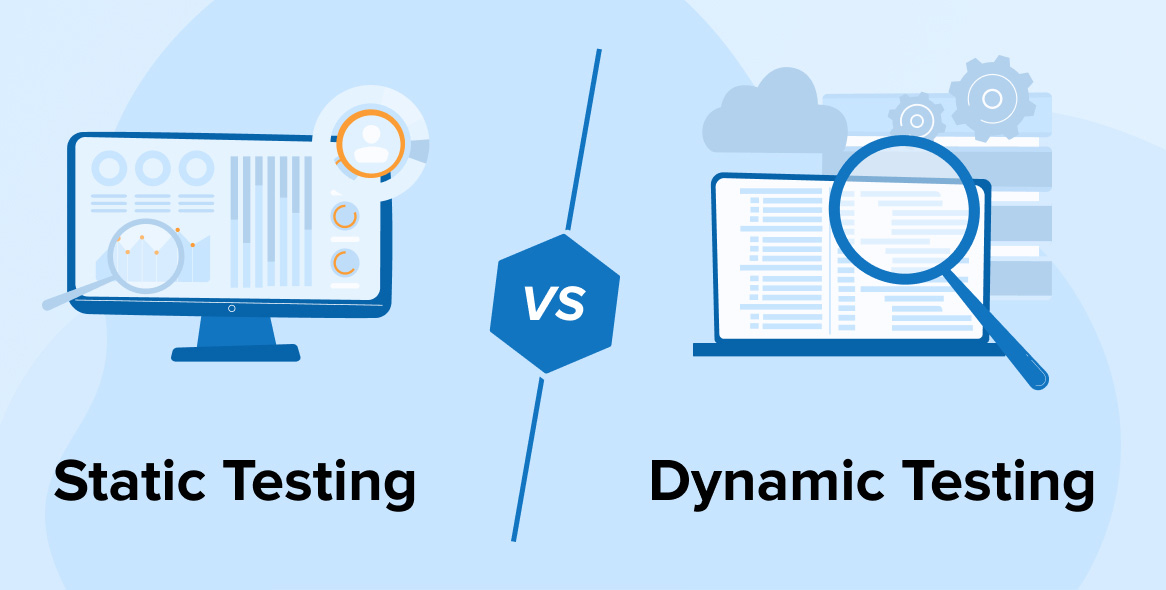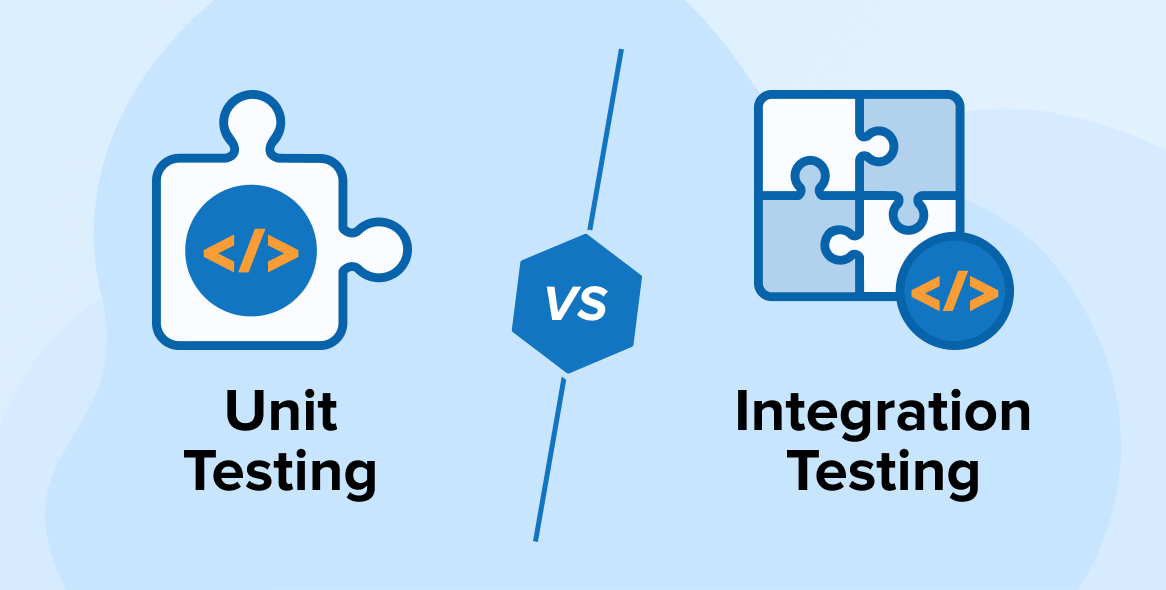
Testing processes are used to improve the software solutions. To enhance the software testing procedure, metrics are essential. QA and testing teams use software testing metrics to analyze the progress, performance, and effectiveness of various testing activities.
A popular software testing company can efficiently assess the quality of the product because it uses qa metrics as its guiding posts. Advanced testing tools and QA best practices have little impact without the effective use of software testing metrics.
Read this article to understand them and how they work.
1. What are Software Testing Metrics?
Software testing metrics are quantitative measures that enable testers and QA analysts to track or identify the efficiency and effectiveness of testing processes. These metrics provide insights into various aspects of testing procedures, such as performance, execution progress, test coverage, defect detection, and more.
The purpose of using software testing metrics is to provide a comparative measure for testing processes. These metrics help compare test results with the historical data and industry standards to evaluate test performance and identify areas for improvement. Developers and product owners can make informed decisions through this data-driven approach.
Quora user says about software testing metrics.

1.1 Importance of Software Testing Metrics
You can’t simply run a test without using quantitative measures or key metrics to assess its quality and effectiveness. There are many more reasons why you should utilize software testing. Let us explore them in detail.
1. Monitoring Progress
To monitor the progress of the testing process, you can select appropriate test team metrics that provide details, such as the number of test cases, test execution rate, completion rate, and more. The main purpose of monitoring the test progression is to ensure that it is following the predetermined plan.
2. Understanding Risks Associated with Software
By tracking certain indicators, you can identify potential security vulnerabilities and risks in your program. This enables the testing team to address these issues effectively, handle their resources efficiently, and improve their testing efforts, leading to better risk mitigation.
3. Increased Customer Satisfaction
Testing metrics help check whether the team meets all predetermined conditions. If the team doesn’t meet them, the team must address the gaps immediately. Metrics help teams improve the efficiency of the tests and the test effectiveness, which in turn enhances the quality of the software. This allows the delivery of software that meets user requirements, leading to enhanced customer satisfaction.
4. Resource Optimization
Sometimes system issues arise from the underutilization, overutilization, or the use of inefficient resources. CTOs must keep an eye on resource utilization, and that is possible with software testing metrics. These metrics not only track the usage of selected resources but also help unlock their full potential. Use metrics to analyze their outputs and identify which resources you should replace or optimize.
2. Types of Software Testing Metrics

Software testing metrics come in various types depending on their implementation. The following section explores them all in brief.
2.1 Absolute Metrics
Any raw values recorded by the testing team during the testing phase are called absolute metrics. Sometimes this metric helps, but not in the case of determining the quality of the software. Absolute metrics serve as the foundation for calculating other metrics. They are the initial values. Some examples of absolute metrics in the software testing process are:
- Number of test cases written.
- Number of executed test cases by the QA team.
- Number of tests that passed, failed, and were blocked.
- Number of bugs found during each testing procedure.
- The number of defects accepted and rejected at each step of the testing phase.
2.2 Process Metrics
Process metrics are used to assess the effectiveness and efficiency of each testing activity. For example:
- Effectiveness of the test cases: Checking how well a test case can identify the issues. It helps analyze the quality of the test cases and make necessary changes to enhance their effectiveness in detecting problems.
- Cycle time: The total amount of time taken to complete one cycle of a testing process is a key metric that reflects the efficiency of test runs. If there is any delay, then there is likely to be an inefficiency in the setup or test environment.
- Defect Fixing Time: The Time taken from identification to resolution helps identify delays in the defect resolution process and optimize the workflow.
2.3 Product Metrics
The measurements used by the testing experts to evaluate the efficiency and performance of a product are called product metrics. These metrics provide valuable insights into the features and functionalities of the product.
Using product metrics allows the testing team to assess whether the customers’ requirements will be met and how likely faults are to occur in the product, among other elements. Tracking and analyzing data provided by product metrics helps determine the product’s benefits and limitations.
2.4 Project Metrics
General measurements help a team track the progress of a specific testing task and identify potential risks. In a typical testing process, a project manager uses these metrics to identify the areas requiring improvement. Overall, project metrics are used to ensure high-quality project outcomes.
Project metrics also help with the following:
- Detects errors in every stage of the development process.
- Make suitable corrections to avoid potential risks and delays.
- Measuring delivered code, developed models, and function points.
- Continuous monitoring of the product to identify and fix technical flaws as soon as they are detected.
In short, it is thanks to the project metrics that the testing team can track the progress of the project, assess risks, address problem areas, and enhance product quality. Proper use of project metrics, especially in automated testing, helps identify and resolve issues early in the project, making the testing process more time and cost-effective.
2.5 Coverage Metrics
As the name suggests, coverage metrics allow the testing experts to measure the scope of their testing strategies in terms of various tests, the number of test cases, the amount of code covered, associated risks, and requirements coverage. Among these, test coverage metrics provide a detailed understanding of the scale of testing performed. Testers and QA experts rely on test execution coverage to know which tests they should run, which part of the codebase to test, for what scenarios they are tested, and how many times each test has been executed.
3. Manual Testing Metrics: What are They and How Do They Work?
The metrics for manual software testing don’t differ very much from those of automated testing. The quantitative measures that quality analysts must track and analyze can be divided into two parts:
3.1 Base Metrics
Base metrics are determined using data collected during the development and execution of test cases. After creating the status report for the project, these metrics are communicated to the project managers and team leads. It is used to quantify the following:
- Number of test cases.
- Number of planned and actual testing times.
- Number of bugs detected.
- Number of bugs reported, accepted, rejected, and deferred.
- Number of test cases passed, failed, and blocked.
- Number of bugs detected post-deployment.
3.2 Calculated Metrics
Base metrics enable the collection and gathering of data, which is then used to generate calculated metrics. The test lead collects the data and derives useful insights to track project progress at the tester, module, and other levels. Calculated metrics are important not for the QA process but for the entire software development lifecycle, as they help developers make critical changes to the software for improved quality and project outcomes.
4. Test Metrics Life Cycle
The section below illustrates and explains different stages of a test metric’s life cycle.

- Analysis: This is the stage where you identify the required metrics and define their purpose. For that, first understand your project and its requirements, then determine the performance indicators.
- Communication: After identifying and clearly defining the necessary metrics, you must communicate them to stakeholders and testing teams. It is to ensure that everyone is on the same page regarding project objectives and the assessment of its activities, as well as the product.
- Evaluation: Next comes the phase when the testing team and each test member use the metrics to gather the data. After accumulating the data is verified to determine whether the metrics can tell what you wish to know, like the test performance or progress. This phase is about checking the relevance and accuracy of the metrics and must be carried out frequently to ensure reliable results.
- Reporting: Document all findings from the metrics, assess them, and derive valuable insights. Now, prepare a detailed report that includes all the data, summaries, and necessary explanations. Share this report with the stakeholders and interested parties. Ask for their feedback on how to proceed or make data-driven decisions.
5. Calculating Software Test Metrics
Every test metric provides a specific formula for calculating different aspects of the testing process. Here, we will understand critical software testing metrics and their formulas.
| Metric | Description | Formula |
|---|---|---|
| Test Case Effectiveness | It measures the efficiency of the testing procedure to identify defects or errors. | (Total defects detected / Total number of defects in the system identified pre and post testing) x 100 |
| Passed Test Cases Percentage | Shows the percentage of test cases that passed out of the total. | Passed Test Cases Percentage = (Total number of tests passed / Total number of test cases executed) x 100 |
| Failed Test Cases Percentage | Shows the percentage of test cases that failed out of the total. | Failed Test Cases Percentage = (Total number of test cases failed / Total number of test cases executed) x 100 |
| Blocked Test Cases Percentage | Shows the percentage of test cases that were blocked out of the total. | Blocked Test Cases Percentage = (Number of blocked/skipped tests / Total number of test cases executed) x 100 |
| Fixed Defects Percentage | It calculates the proportion of defects resolved from the total defects found. | Fixed Defects Percentage = (Total number of defects fixed / Total number of defects reported) x 100 |
| Accepted Defects Percentage | Measures the percentage of defects that the development team accepted out of the total defects reported by the testing team. | Accepted Defects Percentage = (Defects Accepted by Development Team / Total number of Defects Reported) x 100 |
| Defects Deferred Percentage | Measures the percentage of defects deferred for future releases out of the total defects reported. | Defects Deferred Percentage = (Defects deferred / Total number of Defects Reported) x 100 |
| Rework Effort Ratio | Calculates the ratio of rework efforts made due to defects and total efforts spent in that stage. | Rework Effort Ratio = (Rework efforts spent in that phase/ Total efforts spent in that phase) x 100 |
| Defect Density | Shows the total number of defects detected from a specific size of module. | Defect Density = Total Defects / Size of the Module |
| Defect Leakage | Shows the number of defects that were missed during the testing phase but were detected later. | (Defects Found Post-Testing / Total number of defects in the system identified pre and post testing) x 100 |
| Defect Removal Efficiency | Measures the proportion of defects resolved by developers out of the total defects reported by the testing team. | Defect Removal Efficiency = (Defects Removed / Total Defects Reported) x 100 |
6. Examples of Software Testing Metrics
In this section, we will be using sample data to show you how software testing metrics are calculated.
- Number of requirements: 10
- The average test cases per requirement: 5
- Total test cases created: 100
- Total test cases executed: 70
- Passed test cases: 45
- Failed test cases: 20
- Blocked test cases: 5
- Unexecuted test cases: 30
- Total defects identified: 20
- Fixed defects: 11
- Accepted (but not necessarily fixed yet, or includes fixed): 13
- Deferred defects: 2
- Total defects in the system: 22
- Rework effort: 2 hours
- Total efforts: 10 hours
- Module size: 1000 lines of code
Now that we have our sample data ready, let’s perform the software test metrics calculation using the given formulas.
Test Case Effectiveness = (Total defects detected / Total number of defects in the system identified pre and post testing) x 100
= 20/22 * 100 %
= 0.9090*100 %
Test Case Effectiveness = 90.90%
Passed Test Cases Percentage = (Total number of tests passed / Total number of test cases executed) x 100
= 45/70 * 100%
= 0.6428*100%
Passed Test Cases Percentage = 64.28%
Failed Test Cases Percentage = (Total number of test cases failed / Total number of tests executed) x 100
= 20/70 * 100%
= 0.2857*100%
Failed Test Cases Percentage = 28.57%
Blocked Test Cases Percentage = (Number of blocked/skipped tests / Total number of test cases executed) x 100
= 5/70 * 100%
= 0.0714*100%
Blocked Test Cases Percentage = 7.14%
Fixed Defects Percentage = (Total number of defects fixed / Total number of defects reported) x 100
= 11/20 * 100%
= 0.55*100%
Fixed Defects Percentage = 55%
Accepted Defects Percentage = (Defects Accepted by Development Team / Total number of Defects Reported) x 100
= 13/20 * 100%
= 0.65*100%
Accepted Defects Percentage = 65%
Defects Deferred Percentage = (Defects deferred / Total number of Defects Reported) x 100
= 2/20 * 100%
= 0.1*100%
Defects Deferred Percentage = 10%
Rework Effort Ratio = (Rework efforts spent in that phase/ Total efforts spent in that phase) x 100
= 2/10 * 100%
= 0.2*100%
Rework Effort Ratio = 20%
Defect Density = Total Defects / Size of the Module
= 22/1000
Defect Density = 0.022
Defect Leakage = (Defects Found Post-Testing / Total number of defects in the system identified pre and post testing) x 100
= 2/22 * 100%
= 0.0909*100%
Defect Leakage = 9.09%
Defect Removal Efficiency = (Defects Removed / Total Defects Reported) x 100
= 11/20 * 100%
= 0.55*100%
Defect Removal Efficiency = 55%
7. Conclusion
Metrics are critical to evaluating, managing, and improving the software testing process. Optimized tests deliver better project outcomes. Quality assurance teams, agile teams, and testers use these metrics to monitor various testing activities, track progress, and gather valuable information to make informed decisions.
Using software testing metrics helps enforce the testing standards and improve performance, leading to increased process efficiency and enhanced product quality.
This article covers the concept of software testing metrics and their life cycle. We also discussed at length different types of testing metrics, along with their importance, individual formulas, and examples. If you have any queries, feel free to contact our experts.
FAQs
What are the KPIs of Software Testing?
KPIs, or the key performance indicators, are the metrics used to monitor and measure the effectiveness and efficiency of the software testing process. They help determine whether it is progressing as expected and achieving its goals.
What is a key Agile Process Metric?
Velocity is the key agile process metric used to measure the amount of work a team completes during a specific period or sprint.
What are the Golden 4 Metrics?
The four golden metrics to monitor the health and performance of the IT systems are latency, errors, traffic, and saturation.






Comments
Leave a message...